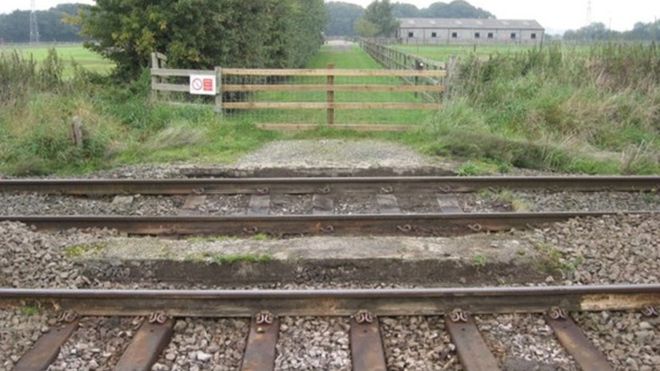
A rural farm-level crossing where a man was killed as he drove across the railway line has been permanently removed by Network Rail.
Elderly driver Eric Ireland died at the Ivy Lea farm rail crossing at Scampston, near Malton, in 2014.
Mr Ireland's car was struck by a train travelling at 70mph as he crossed the railway.
Network Rail said an agreement had been reached with the landowner to get the crossing on the York to Scarborough railway line closed.
Robert Havercroft, Network Rail’s level crossing manager, said: “The removal of Ivy Lea Farm level crossing is something we’ve worked towards for several years and I am pleased that we reached an agreement to remove the crossing equipment entirely.”
He said the company had also legally closed three other private farm crossings on the same line, near Haxby and Barton-le-Willows, following agreement with landowners.
Network Rail has been gradually closing many of the 6,000 level crossings it manages across the UK.
Dangers of level crossings
A new safety video released by National Rail has highlighted the dangers of using level crossings on farmland.
The short film, available in 3D, illustrates some of the dangers of not taking care when crossing private level crossings with farm machinery.
Figures from Network Rail reveal incidents at level crossings rise during harvest season, as farmers rush to gather their crops before the good weather runs out.
Last harvest season saw the most level crossing incidents in four years and almost 300 more incidents than the previous year
.
NFU vice-president Guy Smith said: “Many of the accidents and fatalities that we have on farms can be reduced by just observing safe practice. That is very true of using level crossings.
“Farmers can minimise and mitigate the risks involved with crossings on their land, which are private for their use, by simply following safe procedure.”
